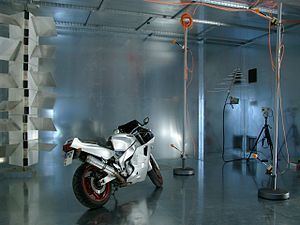 | ||
An electromagnetic reverberation chamber (also known as a reverb chamber (RVC) or mode-stirred chamber (MSC)) is an environment for electromagnetic compatibility (EMC) testing and other electromagnetic investigations. Electromagnetic reverberation chambers have been introduced first by H.A. Mendes in 1968. A reverberation chamber is screened room with a minimum of absorption of electromagnetic energy. Due to the low absorption very high field strength can be achieved with moderate input power. A reverberation chamber is a cavity resonator with a high Q factor. Thus, the spatial distribution of the electrical and magnetic field strengths is strongly inhomogeneous (standing waves). To reduce this inhomogeneity, one or more tuners (stirrers) are used. A tuner is a construction with large metallic reflectors that can be moved to different orientations in order to achieve different boundary conditions. The Lowest Usable Frequency (LUF) of a reverberation chamber depends on the size of the chamber and the design of the tuner. Small chambers have a higher LUF than large chambers.
Contents
The concept of a reverberation chambers is comparable to a microwave oven.
Preface

The notation is mainly the same as in the IEC standard 61000-4-21. For statistic quantities like mean and maximal values, a more explicit notation is used in order to emphasize the used domain. Here, spatial domain (subscript
General
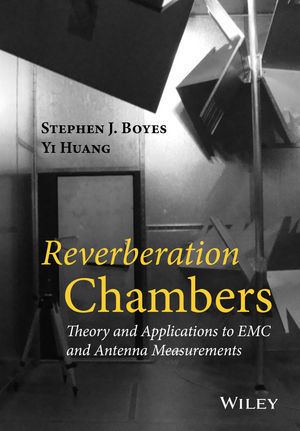
Statistics
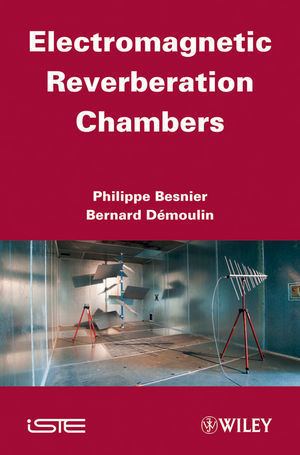
Cavity resonator
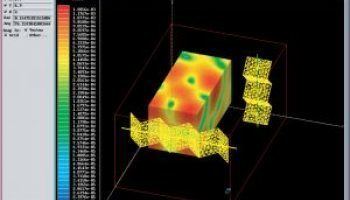
A reverberation chamber is cavity resonator—usually a screened room—that is operated in the overmoded region. To understand what that means we have to investigate cavity resonators briefly.
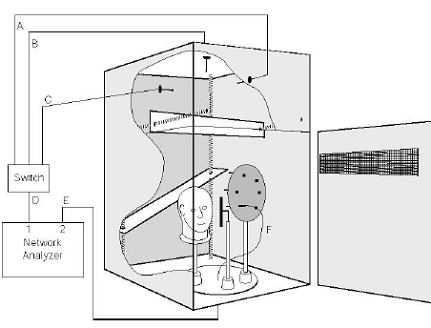
For rectangular cavities, the resonance frequencies (or eigenfrequencies, or natural frequencies)
where
With that equation, the number of modes with an eigenfrequency less than a given limit
The fields at the chamber position
Due to the boundary conditions for the E- and H field, some modes do not exist. The restrictions are:
A smooth approximation of
The leading term is proportional to the chamber volume and to the third power of the frequency. This term is identical to Weyl's formula.
Based on
An important quantity is the number of modes in a certain frequency interval
Quality factor
The Quality Factor (or Q Factor) is an important quantity for all resonant systems. Generally, the Q factor is defined by
The factor Q of the TE and TM modes can be calculated from the fields. The stored energy
The loss occurs in the metallic walls. If the wall's electrical conductivity is
where
The losses
For a rectangular cavity follows
Using the Q values of the individual modes, an averaged Composite Quality Factor
The quality factor including all losses is the harmonic sum of the factors for all single loss processes:
Resulting from the finite quality factor the eigenmodes are broaden in frequency, i.e. a mode can be excited even if the operating frequency does not exactly match the eigenfrequency. Therefore, more eigenmodes are exited for a given frequency at the same time.
The Q-bandwidth
Using the formula
Related to the chamber quality factor is the chamber time constant
That is the time constant of the free energy relaxation of the chamber's field (exponential decay) if the input power is switched off.
